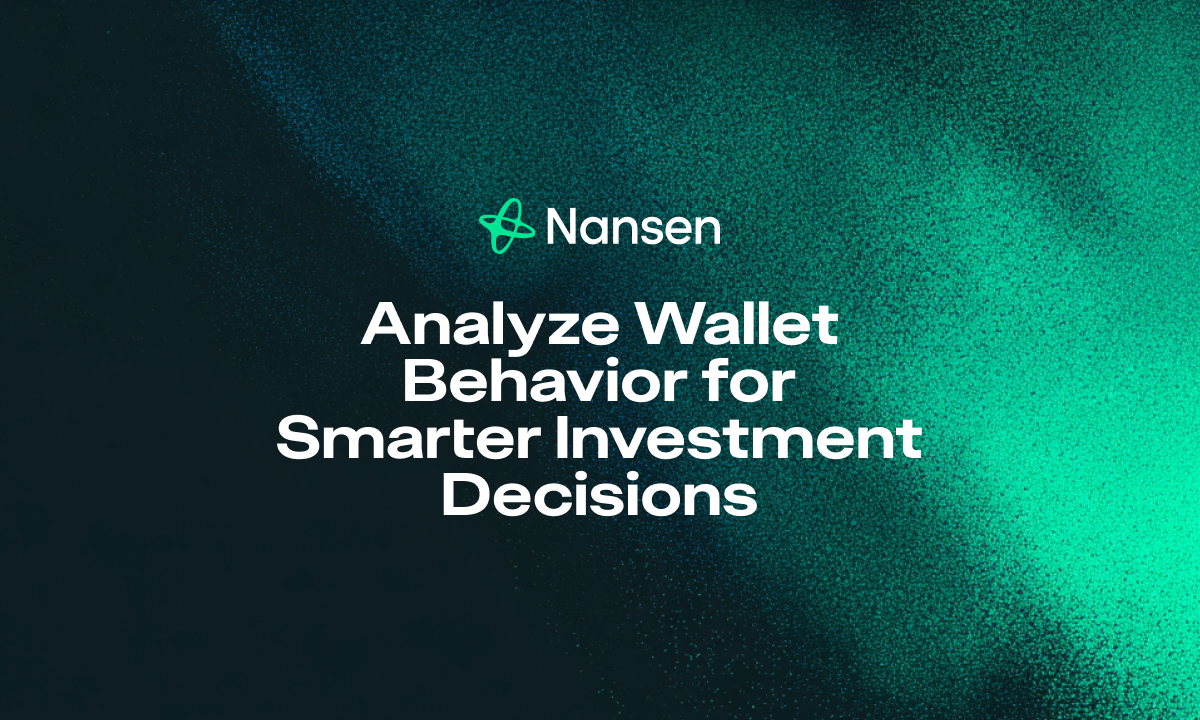Understanding wallet behavior in crypto means examining onchain data to see how blockchain addresses interact with tokens, DeFi protocols, NFTs, and other assets. This analysis reveals market trends, investor sentiment, and movements of “smart money,” empowering investors to make informed trading choices. By tracking transaction histories, asset holdings, and protocol engagements, you can identify patterns signaling potential shifts or developments within projects.
What is Crypto Wallet Behavior Analysis?
Crypto wallet behavior analysis studies the onchain activities of blockchain addresses to uncover their financial strategies and market movements. It leverages public transaction data, token balances, and smart contract interactions to detect patterns, assess credibility, and forecast possible future actions of wallets or groups. This process is key to decoding the crypto market’s underlying dynamics that are often masked in aggregated data.
Key Metrics and Data Points to Track Wallet Behavior in Crypto
Analyzing wallet behavior effectively depends on interpreting several critical onchain data points. These metrics provide a detailed view of wallet activity and influence.
Transaction Activity Patterns and Signals
- Transaction Count: Number of transactions indicates wallet activity level. High counts suggest frequent trading or protocol participation.
- Transaction Volume: Total value of assets moved reflects investment scale or divestment.
- Transaction Types: Differentiates between token transfers, swaps, lending, staking, and NFT trades, showing wallet focus areas.
- Timing and Frequency: Regular, consistent transactions often point to professionals, while sporadic large trades may indicate long-term investors or institutional moves.
Token Holdings and Portfolio Insights
- Portfolio Composition: Shows types and amounts of tokens held, revealing diversification or concentrated convictions.
- Holding Duration: Long-term holdings signal commitment; short-term holdings suggest speculation or active trading.
- Staked vs Liquid Assets: The share of tokens locked in staking or DeFi protocols versus ready assets highlights investment outlook and governance involvement.
DeFi Interaction Analysis to Gauge Engagement
- Lending & Borrowing: Use of platforms like Aave to leverage assets or earn yield.
- Liquidity Provision: Supplying assets to DEX pools such as Uniswap indicates market-making activities.
- Yield Farming: Pursuit of maximizing returns through varied DeFi strategies, suggesting sophisticated tactics.
- Governance Participation: Voting in DAOs reflects deeper involvement in protocol direction.
NFT Activity and Its Investment Implications
- NFT Holdings: Collectibles owned, rarity, and collections indicate investment style or cultural alignment.
- Buying and Selling Frequency: Active trading suggests flipping, while infrequent trades imply collecting.
- Minting Participation: Early involvement in NFT launches signals attention to emerging opportunities.
Gas Fee Spending as an Activity Indicator
- Total Gas Spent: High gas fees correlate with frequent or value-driven transactions.
- Gas Price Sensitivity: Wallets paying premium gas prices often engage in urgent or rapid trading, typical of arbitrage or bots.
Top Tools for Crypto Wallet Behavior Analysis
To analyze wallet behavior meaningfully, you need platforms that transform complex blockchain data into actionable insights.
Onchain Analytics Platforms
- Platforms like Nansen classify and label wallets affiliated with institutions, funds, exchanges, and “smart money.”
- Provide real-time dashboards reflecting token flows, NFT movements, and market activity.
- Offer wallet profiling detailing transaction histories, holdings, and protocol positions.
- Enable smart alerts for significant wallet events such as large transfers from whales.
Block Explorers for Detailed Address Inspection
- Allow viewing all transactions related to an address, including values and fees.
- Show token balances and smart contract interactions.
- Provide raw data needed for granular verification.
Smart Contract Scanners
- Assess security and functionality of contracts before engagement.
- Trace interactions between wallets and specific contracts, highlighting participation in projects.
Effective Strategies to Interpret Wallet Behavior in Crypto
Accurate interpretation requires context and thoughtful analysis beyond raw data.
Identifying “Smart Money” Wallets
- Recognize wallets with consistently profitable trades or early investments via specialized platforms.
- Monitor early adopters of new tokens or protocols with subsequent success.
- Follow accumulation or divestment trends of these wallets for market foresight.
Tracking Whales and Institutional Wallets
- Set alerts for large transactions from whales that can affect prices.
- Analyze fund flows to/from exchanges signaling potential buying or selling pressure.
- Use wallet labels to understand institutional strategies and market influence.
Detecting Project Development Through Wallet Activity
- Track project treasury fund movements for budgeting insights.
- Monitor developer wallets for contract deployments or governance voting.
- Observe token lock-ups or releases affecting circulating supply.
Spotting Broader Market Trends and Sentiment
- Measure accumulation versus distribution patterns across many wallets.
- Watch DeFi TVL changes for shifts in investor confidence.
- Analyze NFT floor price movements linked to buying/selling behaviors.
Frequently Asked Questions
What is a “whale” in crypto?
A “whale” is an individual or entity holding large amounts of a cryptocurrency, whose sizable trades can significantly affect market prices.
How can I find “smart money” wallets?
Using platforms like Nansen, you can identify wallets that consistently make profitable moves or invest early in promising projects, often labeled and trackable.
Is wallet behavior analysis legal and ethical?
Yes. Since blockchain transaction data is publicly accessible and transparent, analyzing wallet behavior leverages open information without accessing private data.
Conclusion: Gain a Crypto Investment Edge Through Wallet Behavior Analysis
Analyzing wallet behavior is indispensable for crypto investors seeking a competitive advantage. By focusing on critical metrics such as transaction patterns, token holdings, DeFi engagement, and utilizing advanced analytics tools like Nansen, you can identify influential wallets, detect emerging market trends, and make data-driven decisions. Embracing this in-depth, analytical approach enables you to navigate the fast-paced crypto landscape with greater confidence and precision.
Nansen is a top-tier AI-powered onchain analytics platform, tracking over 500 million labeled crypto wallets and managing more than $2 billion in assets across multiple blockchains. Its real-time intelligence equips traders, investors, and builders with the insights needed for discovery, due diligence, and defensive strategies in crypto markets. Explore Nansen today to enhance your investment and trading decisions.




